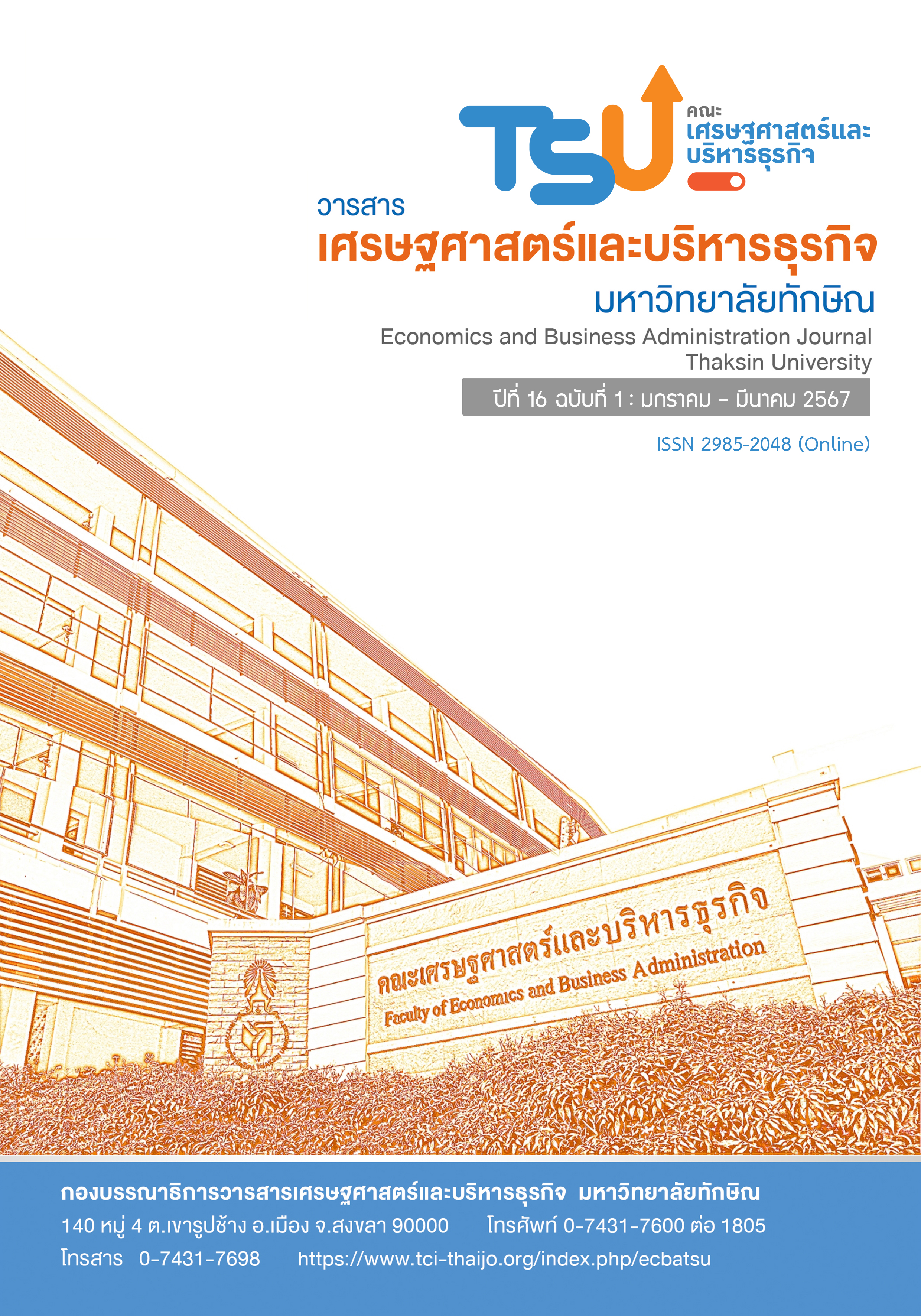Area-Based Budget Allocation and Notes to the Provincial Concentration and Inequality
DOI:
https://doi.org/10.55164/ecbajournal.v16i1.259931Keywords:
area-based budget allocation, Gini coefficient, provincial budget per capita, budget allocation theoriesAbstract
This paper presents the area-based budget allocation in Thailand over the period BE2559-2561 and highlights budget allocation by provinces using institutional economics as framework. The objectives offers recognizes that budget allocation may be explained by different theories, for instrances, 1) institutional factors, 2) bargaining power of agencies, 3) growth-led-budget, 4) policy responsive to specific problem, and 5) equalization policy. The methodology used a Gini coefficient estimation, a measure of inequality which is defined as the budget per capita. The provinces are groups by quintile in accordance to budget per capita. The results shows that budget allocation tends to be concentrated in central provinces and unequal distributed across regions. This paper has some limitation due to rather short-period of study and it should be studied further to include recent years (BE2562 to present)
References
Crowley, G. R. (2019). The Law of 1/n Revisited: Distributive Politics, Legislature Size, and the Costs of Collective Action. Southern Economic Journal, 86(2), 667-690.
Gehring, K., & Schneider, S. A. (2018). Towards the Greater Good? EU Commissioners Nationality and Budget Allocation in the European Union. American Economic Journal: Economic Policy, 10(1), 214-239.
Kemmerling, A., & Bodenstein, T. (2006). Partisan Politics in Regional Redistribution: Do Parties Affect the Distribution of EU Structural Funds across Regions?. European Union Politics, 7(3), 373-392.
Larcinese, V,, Rizzo, L., & Testa, C. (2006). Allocating the U.S. Federal Budget to the States: the Impact of the President. Journal of Politics, 68(2), 447-456.
Livert, F., & Gainza, X. (2018). Distributive Politics and Spatial Equity: The Allocation of Public Investment in Chile. Regional Studies, 52(3), 403-415.
Luca, D., & Rodriguez-Pose, A. (2015). Distributive Politics and Regional Development: Assessing the Territorial Distribution of Turkey’s Public Investment. The Journal of Development Studies, 51(11), 1518-1540.
Pang, M., Tafti, A., & Krishnan, M.S. (2016). Do CIO IT Budgets Explain Bigger or Smaller Governments? Theory and Evidence from U.S. State Governments. Management Science, 62(4), 1020-1041.
Patmasiriwat, D., & Ratchatapibhunphob, P. (2016). Departmental Budget Appropriation of Thai Government. Journal of Graduate Studies Valaya Alongkron Rajabhat University, 10(3), 227-244.
Portrafke, N. (2011). Does Government Ideology Influence Budget Composition? Empirical Evidence from OECD Countries. Economics of Governance, 12(2011), 101-134.
Young, A. T., & Sobel, R. S. (2013). Recovery and Reinvestment Act Spending at the State Level: Keynesian Stimulus or Distributive Politics?. Public Choice, 155(3/4), 449-468.
Downloads
Published
How to Cite
Issue
Section
License
Copyright (c) 2024 Faculty of Economics and Business Administration, Thaksin University

This work is licensed under a Creative Commons Attribution-NonCommercial-NoDerivatives 4.0 International License.




